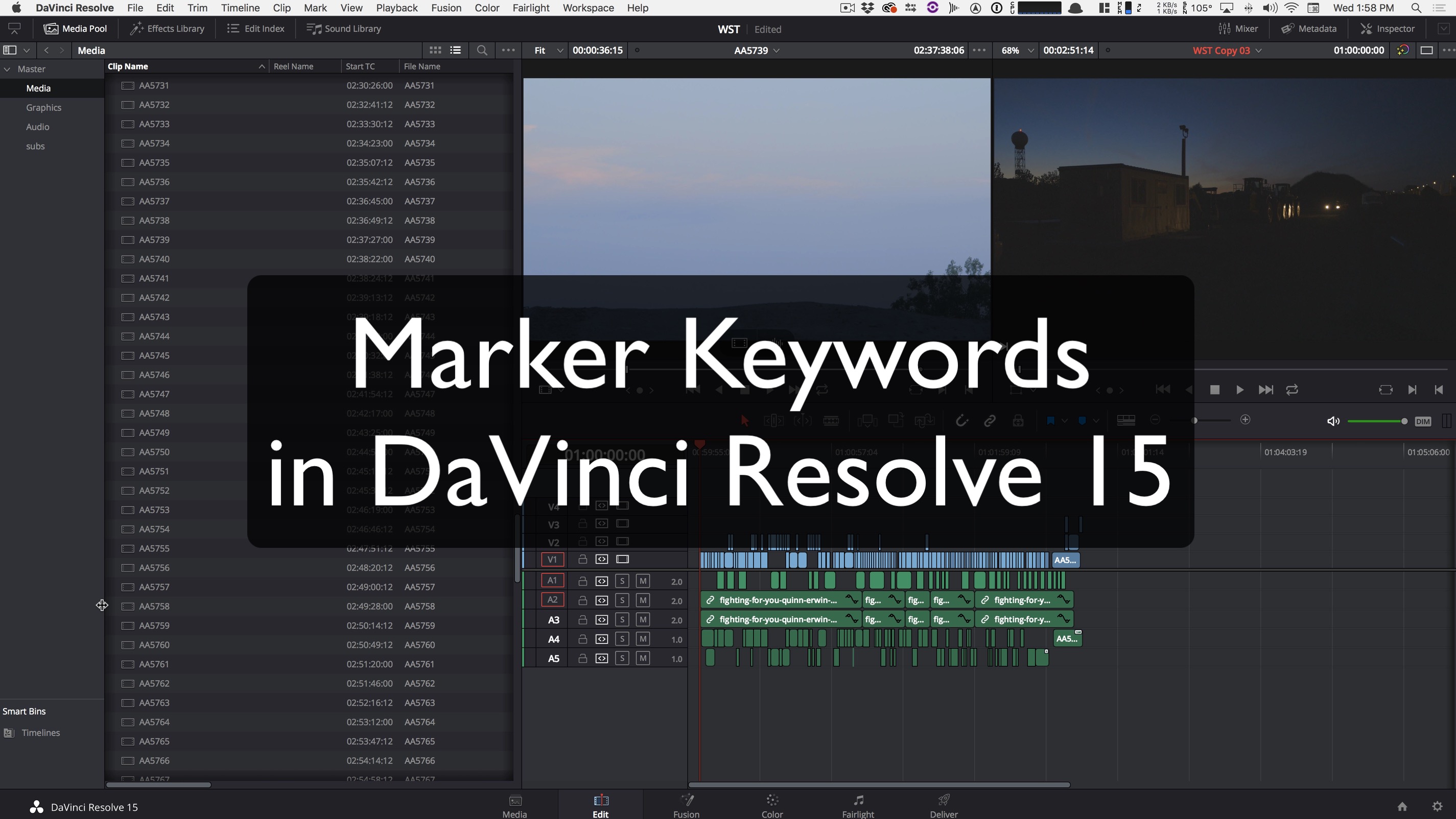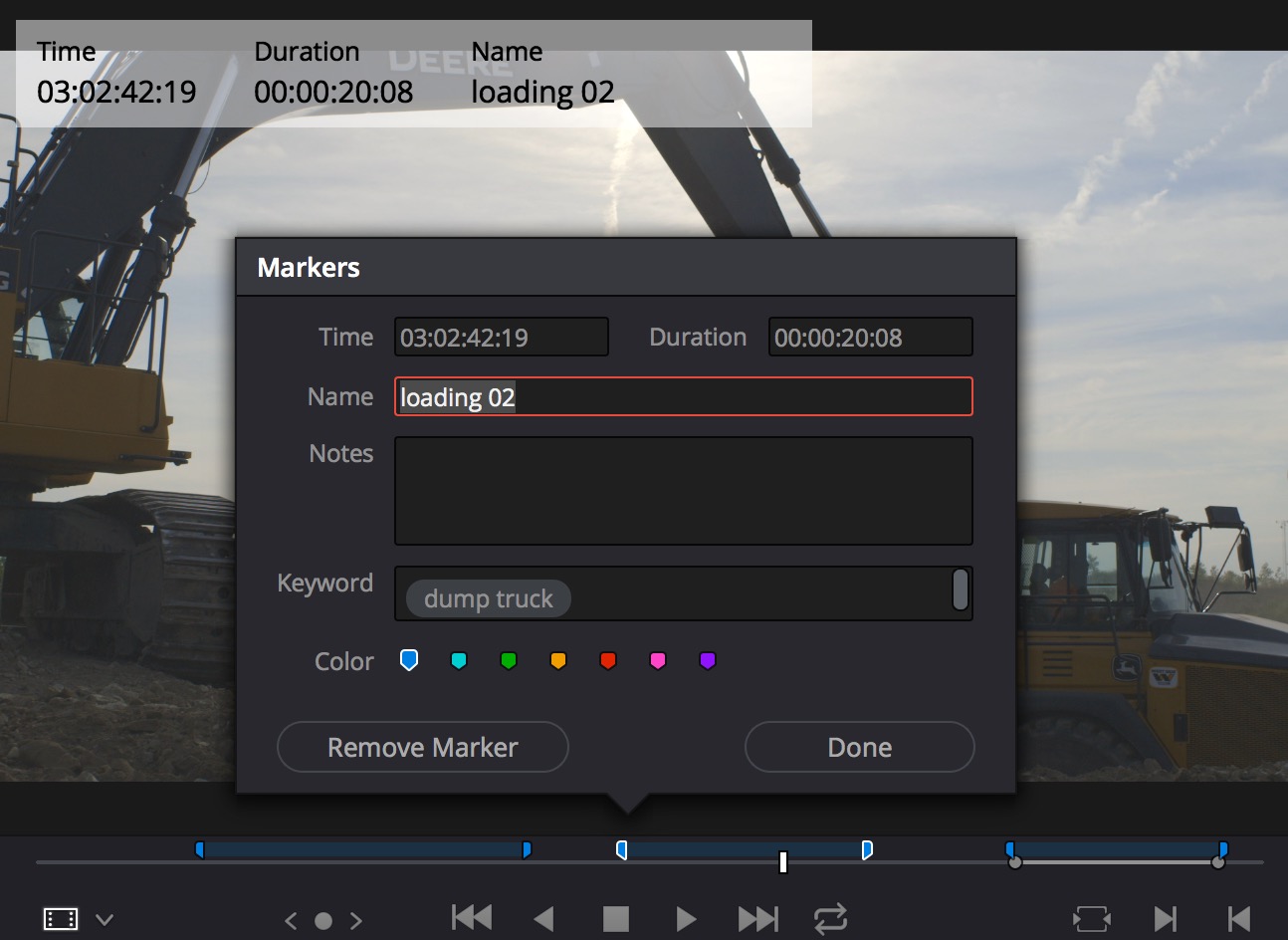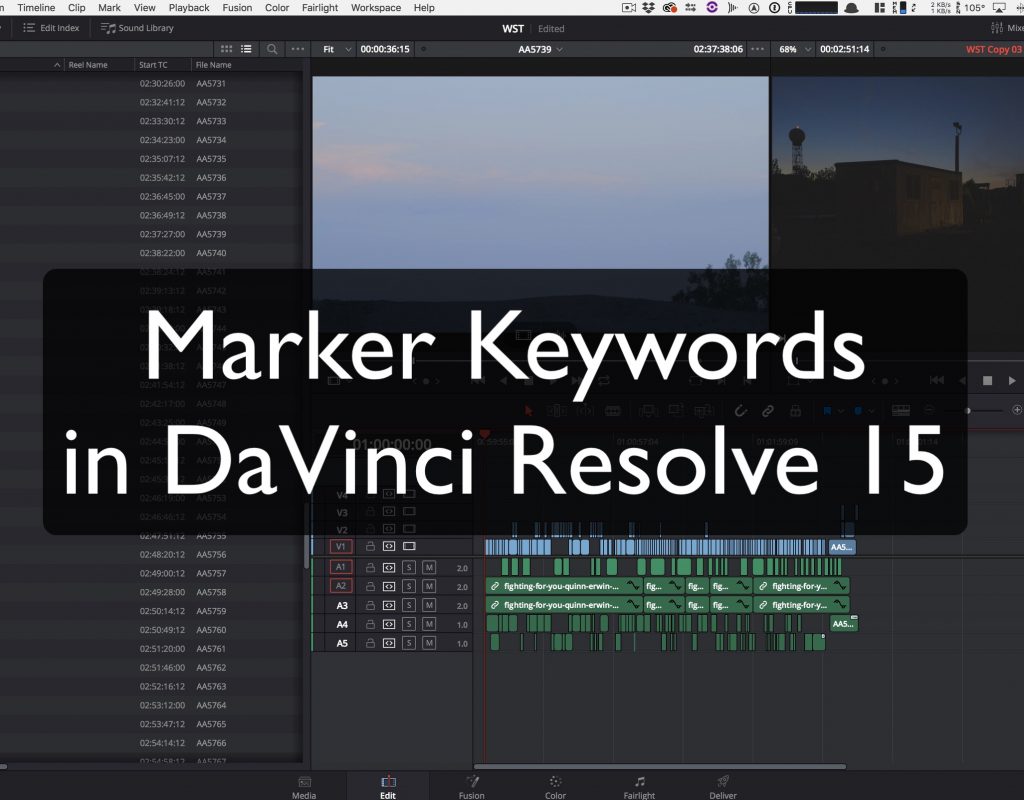 Recently I posted an article called DaVinci Resolve is a few steps away from Range-based Keywording. It was an exploration of how a combination of small featured in Resolve 15 can come together to sort of emulate Final Cut Pro X’s Range-based keywording. These aren’t all features that were new to Resolve 15 though some of them have been added and matured in recent updates. They also don’t add up to equal the unique, efficient and powerful way that FCPX can log and organize materials. But by having keywords in general Resolve has a level of logging and organization that is one feature beyond both Avid Media Composer and Adobe Premiere Pro. Yes, those tools have things like notes and comments and descriptions, all available by applying metadata to clips in a bin, but they don’t have keywords.
Recently I posted an article called DaVinci Resolve is a few steps away from Range-based Keywording. It was an exploration of how a combination of small featured in Resolve 15 can come together to sort of emulate Final Cut Pro X’s Range-based keywording. These aren’t all features that were new to Resolve 15 though some of them have been added and matured in recent updates. They also don’t add up to equal the unique, efficient and powerful way that FCPX can log and organize materials. But by having keywords in general Resolve has a level of logging and organization that is one feature beyond both Avid Media Composer and Adobe Premiere Pro. Yes, those tools have things like notes and comments and descriptions, all available by applying metadata to clips in a bin, but they don’t have keywords.

Once you add those keywords to clips in Resolve you can do things with them, like collect them into a Smart Bin. If you add Marker Keywords you can add them to a range of frames by setting a duration to that marker. You can also collect them as subclips into other bins or even selects sequences. And there are probably more things you can do with them that I haven’t discovered yet.
This is often what I do when a new editorial tool comes around that I may have to use. I dig into some of the tools and techniques that the tool might offer and try to find unique, cool, efficient and just fun ways to use them to make craft / offline editing easier. When I do these things I often post about them here on the Editblog. That’s how the free 2-part Craft Editing in DaVinci Resolve 15 webinar came to be on Moviola. All about learning and discovering how to properly use Resolve for creative editing and storytelling.

After the post on Range-based keywording in Resolve, I got several messages about the technique (it wasn’t very easy to explain in text) as well as questions about what might be in part 2. Instead of writing up another long blog post I created a screencast that walks through this whole technique. I’m learning this as I go along and I can’t wait to use it more.
https://youtu.be/f4YhXMfflBw
What could Resolve add to take these Marker Keywords and the range-based keywording to the next level? Here are a few of my notes.
- Add the ability to define keywords with a single keystroke. Keyword Shortcuts if you will
- Add an option to clear recent clips out of the clip menu in the source monitor
- Allow the editor to start with a clean and clear Keyword Dictionary with no pre-defined keywords
- Allow Enter/Return on the keyboard to close the Modify Marker dialog box from Keyword field without having to tab out of it
- Allow some use of the Marker name if you take time to put it into the Name field of a marker
- Add some mechanism where only the frames within a marker duration that have a Marker Keyword applied can appear automatically in a Smart Bin
I think that last bullet point is the biggest one for making this technique really work. You don’t want to have to dig around and twirl arrow and drag stuff here and there to get these marked clip regions to a new, usable bin that is separate from their master clips. They may indeed be subclips but if they could exist in their own bin with their own names they would be much more usable.
I have said this before (like up above!) but if this sounds a lot like I’m trying to make Resolve’s Marker Keywords behave like Range-based keywording in FCPX then you’re right, I am. It’s a great way to work and Resolve is close to having a unique logging and organization technique that the other track-based NLEs don’t have.

Filmtools
Filmmakers go-to destination for pre-production, production & post production equipment!
Shop Now













